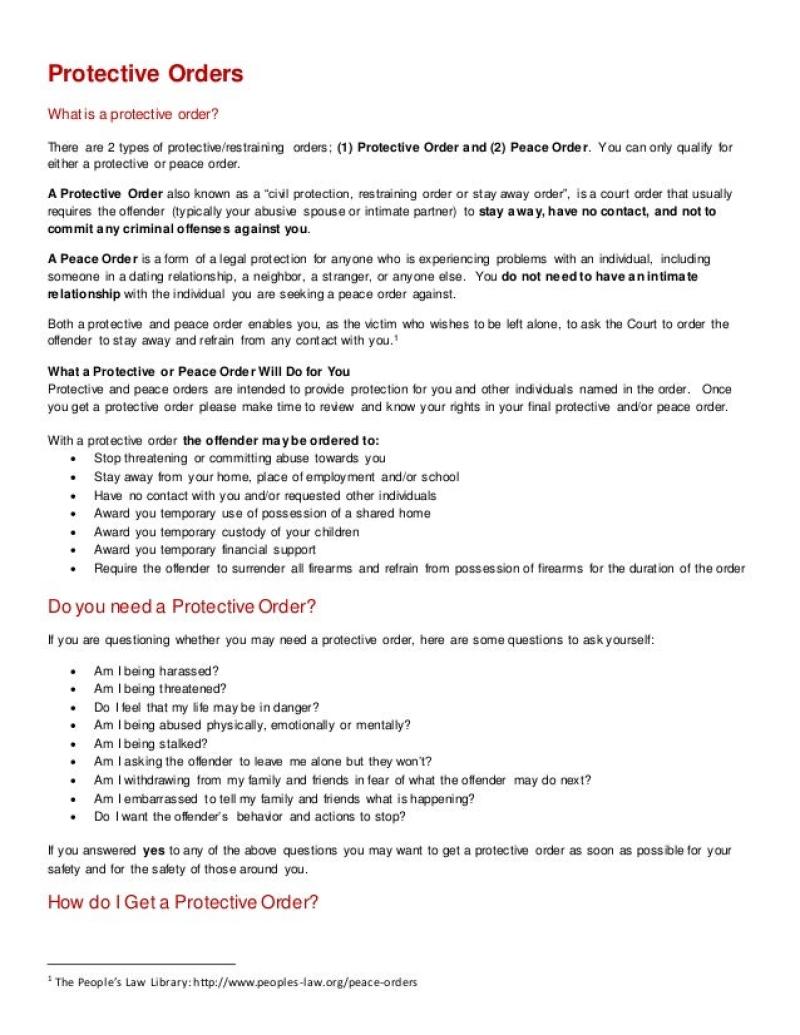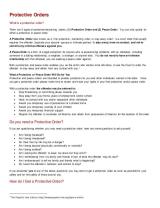What is the protection order registry?
A protection order registry is a centralized database or system maintained by government agencies, typically at the state or local level, that stores information about court-issued protection orders. These registries serve several important purposes:
1. Record Keeping: Protection order registries maintain records of court-issued protection orders, including restraining orders, domestic violence orders, no-contact orders, and other similar legal documents intended to protect individuals from harm or harassment.
2. Accessibility and Information Sharing: They provide a centralized repository where law enforcement agencies, courts, and sometimes the public can access information about active protection orders. This accessibility helps law enforcement officers quickly verify and enforce protection orders across jurisdictions.
3. Enforcement and Compliance: Protection order registries play a crucial role in enforcing court-issued orders. Law enforcement officers can use these databases to verify the existence and terms of protection orders, ensuring compliance and taking appropriate actions to protect the individuals involved.
4. Enhancing Victim Safety: By maintaining accurate and up-to-date records, these registries contribute to enhancing the safety of victims of abuse, harassment, or violence. They provide a means for individuals to seek legal protection and enable law enforcement to respond effectively to potential violations of protection orders.
5. Support in Legal Proceedings: Protection order registries can be used as evidence in legal proceedings related to violations of the orders. They serve as official documentation of court-issued directives, supporting legal actions against individuals who violate these orders.
It's important to note that the accessibility and scope of information within protection order registries can vary by jurisdiction. Some states or localities might restrict public access to certain details or limit the information available for privacy or safety reasons.
Overall, protection order registries are a crucial tool in the legal system aimed at safeguarding individuals from harm or harassment by providing a means to enforce court-issued protection orders and support the safety of those under such orders.
1. Information Contained in the Protection Order Registry
The protection order registry is a database that contains information about protection orders issued by courts throughout the country. The specific information contained in the registry varies from state to state, but it typically includes the following:
Names of the protected person and the restrained person: This information is essential for identifying the individuals involved in the protection order.
Date the protection order was issued: This information helps to determine the validity and enforceability of the order.
Type of protection order: There are different types of protection orders, each with its own set of restrictions and requirements. The registry will typically specify the type of order issued.
Terms of the protection order: This information outlines the specific restrictions placed on the restrained person, such as prohibitions against contacting, approaching, or harming the protected person.
Expiration date of the protection order: This information indicates when the order will no longer be in effect.
2. Accessing or Requesting Information from the Protection Order Registry
Access to the protection order registry is typically restricted to authorized individuals, such as law enforcement officers, court personnel, and authorized representatives of the protected person or restrained person. The specific procedures for accessing the registry vary from state to state.
In some states, the public may be able to access limited information from the protection order registry, such as whether a protection order has been issued against a particular individual. However, this information is often restricted to basic details and may not include the full terms of the order.
To obtain more detailed information from the protection order registry, individuals may need to file a formal request with the appropriate court or law enforcement agency. The specific requirements for requesting information will vary depending on the state and the circumstances of the request.
3. Legal Implications of Protection Order Registry Entries
Entries in the protection order registry have significant legal implications for both the protected person and the restrained person.
Protected Person: For the protected person, the registry serves as a record of the protection order and can be used to demonstrate the existence of the order in court proceedings. The registry can also be used by law enforcement officers to verify the validity of the order and to enforce its terms.
Restrained Person: For the restrained person, the registry serves as a notice of the restrictions placed upon them and the potential consequences of violating those restrictions. The registry can be used to support criminal charges if the restrained person violates the terms of the order.
In addition to these direct legal implications, the protection order registry can also have broader social and personal consequences. For example, employers may check the registry before hiring new employees, and landlords may check the registry before renting to new tenants.
It is important to note that the information contained in the protection order registry is considered confidential and should not be disclosed without authorization. Unauthorized disclosure of this information could result in legal consequences.




